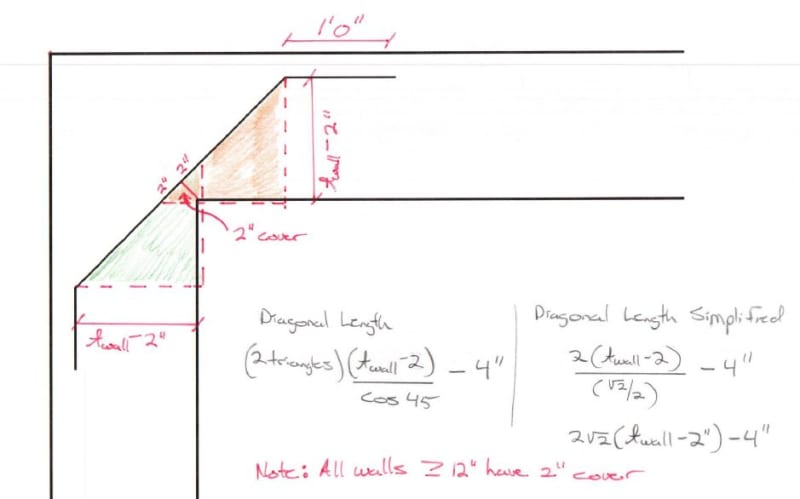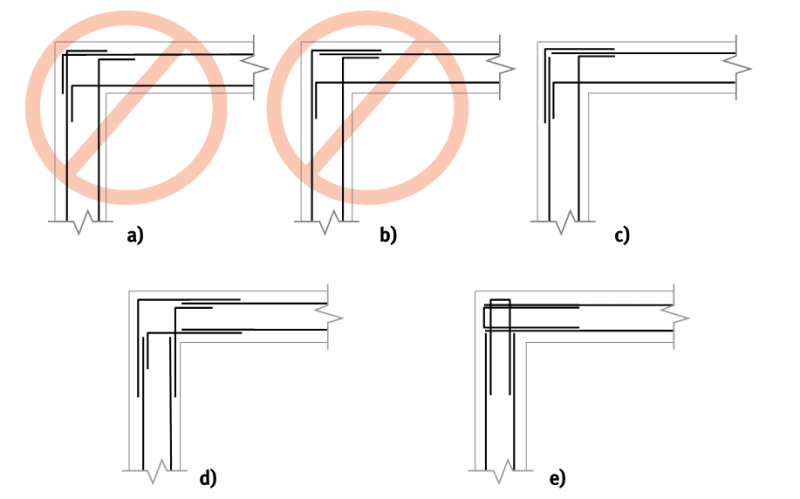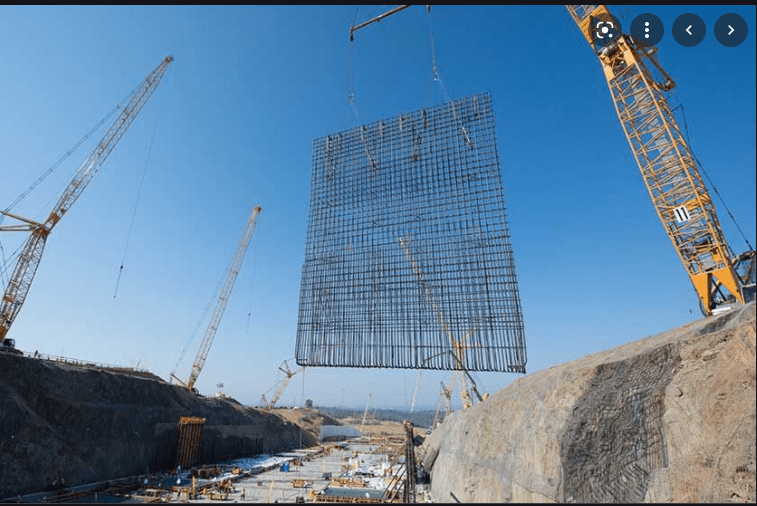-
1
- #1
Hi All,
I have a detailing question about the diagonal bars shown in the ACI Detailing Manual's details for Reinforcement at wall corners. I do have a water retaining structure and are including them in the details but I can't find any good description of how these bars should be detailed.
Does this bar just need to be developed on each side of the corner or does it need enough length to be considered a splice to the exterior rebar? Does the tail after the bend in the bar need to be a certain length (like a standard hook does)? Any help would be appreciated.

I have a detailing question about the diagonal bars shown in the ACI Detailing Manual's details for Reinforcement at wall corners. I do have a water retaining structure and are including them in the details but I can't find any good description of how these bars should be detailed.
Does this bar just need to be developed on each side of the corner or does it need enough length to be considered a splice to the exterior rebar? Does the tail after the bend in the bar need to be a certain length (like a standard hook does)? Any help would be appreciated.


![[smile] [smile] [smile]](/data/assets/smilies/smile.gif) ).
).


